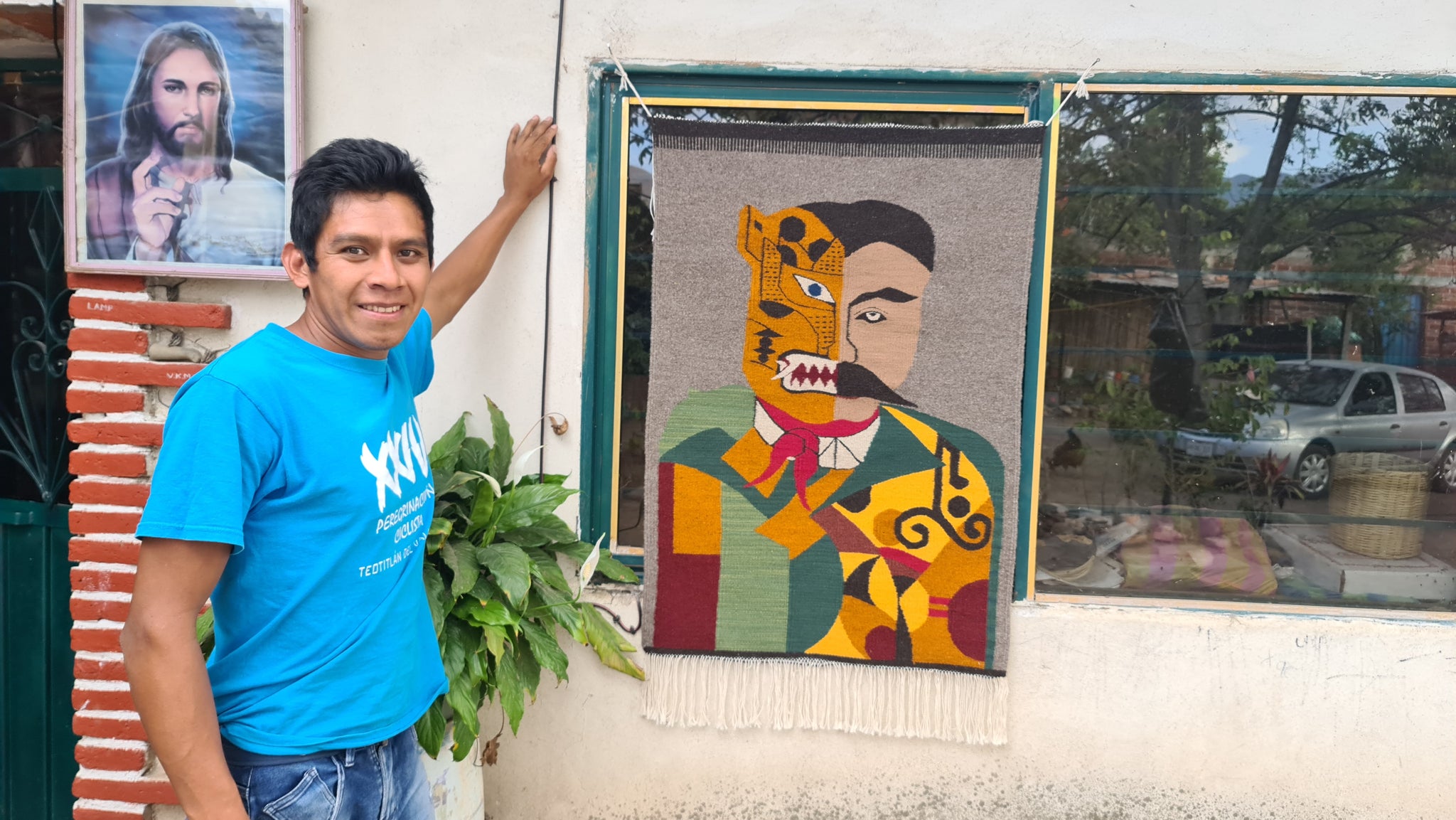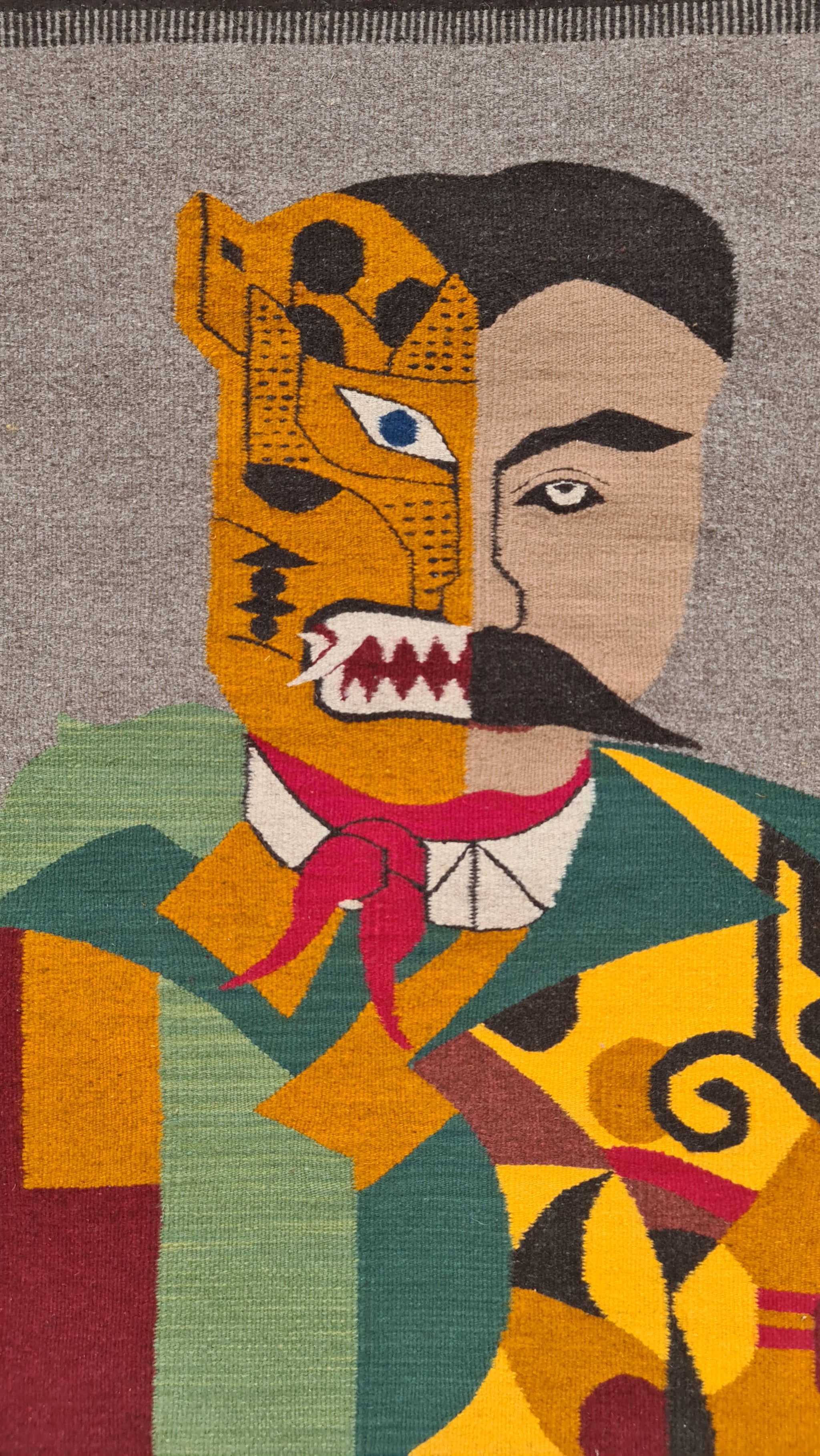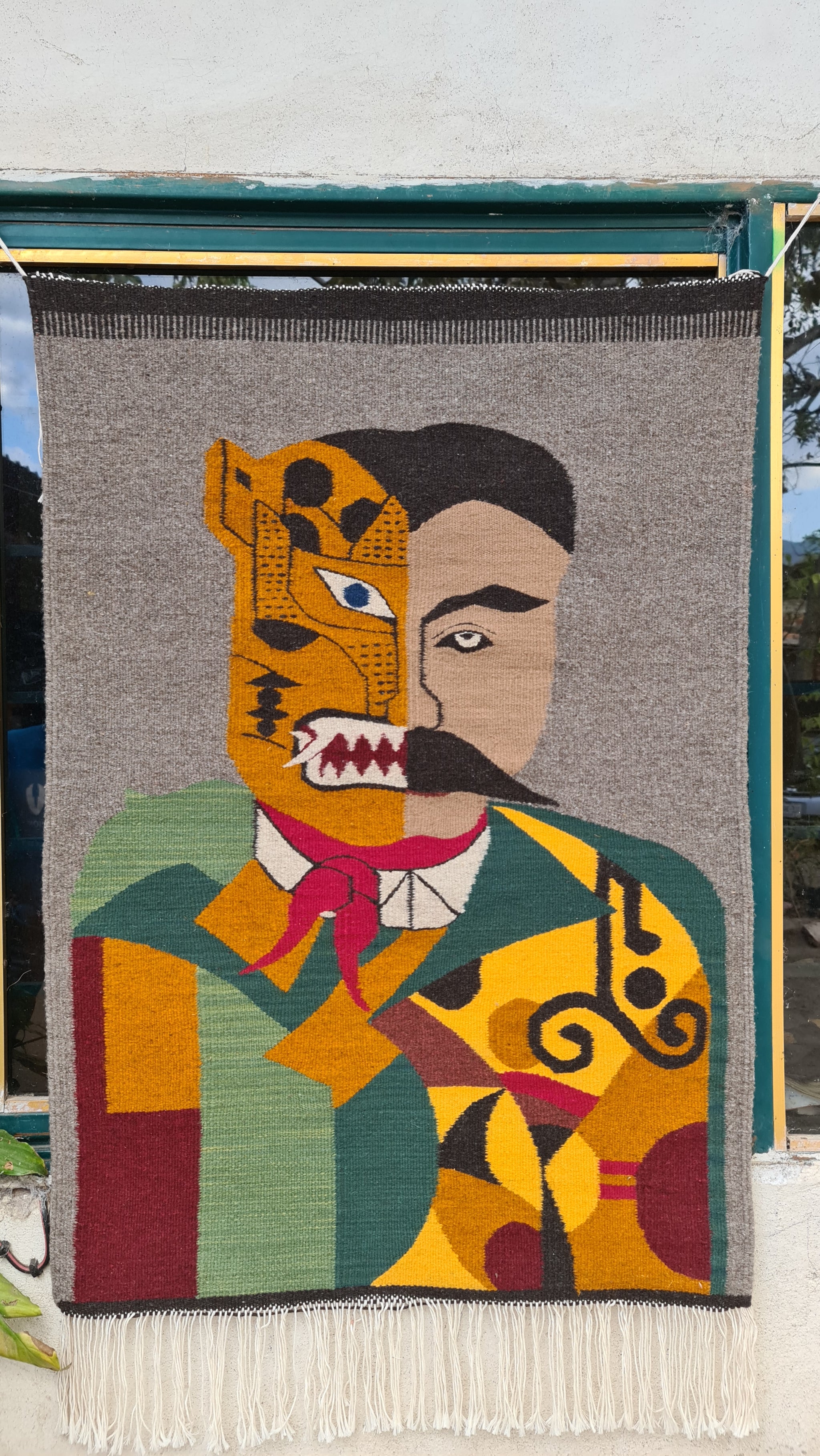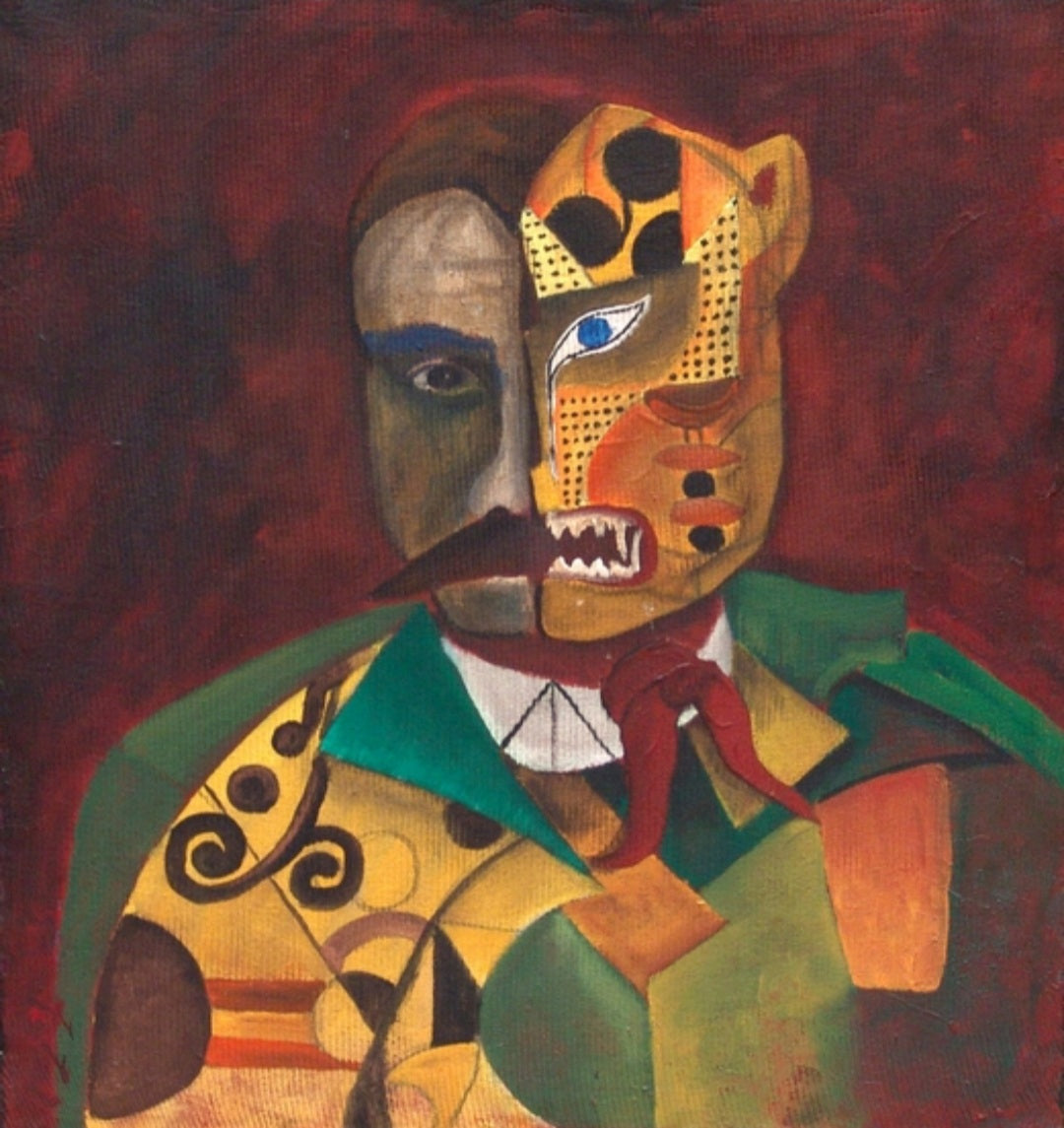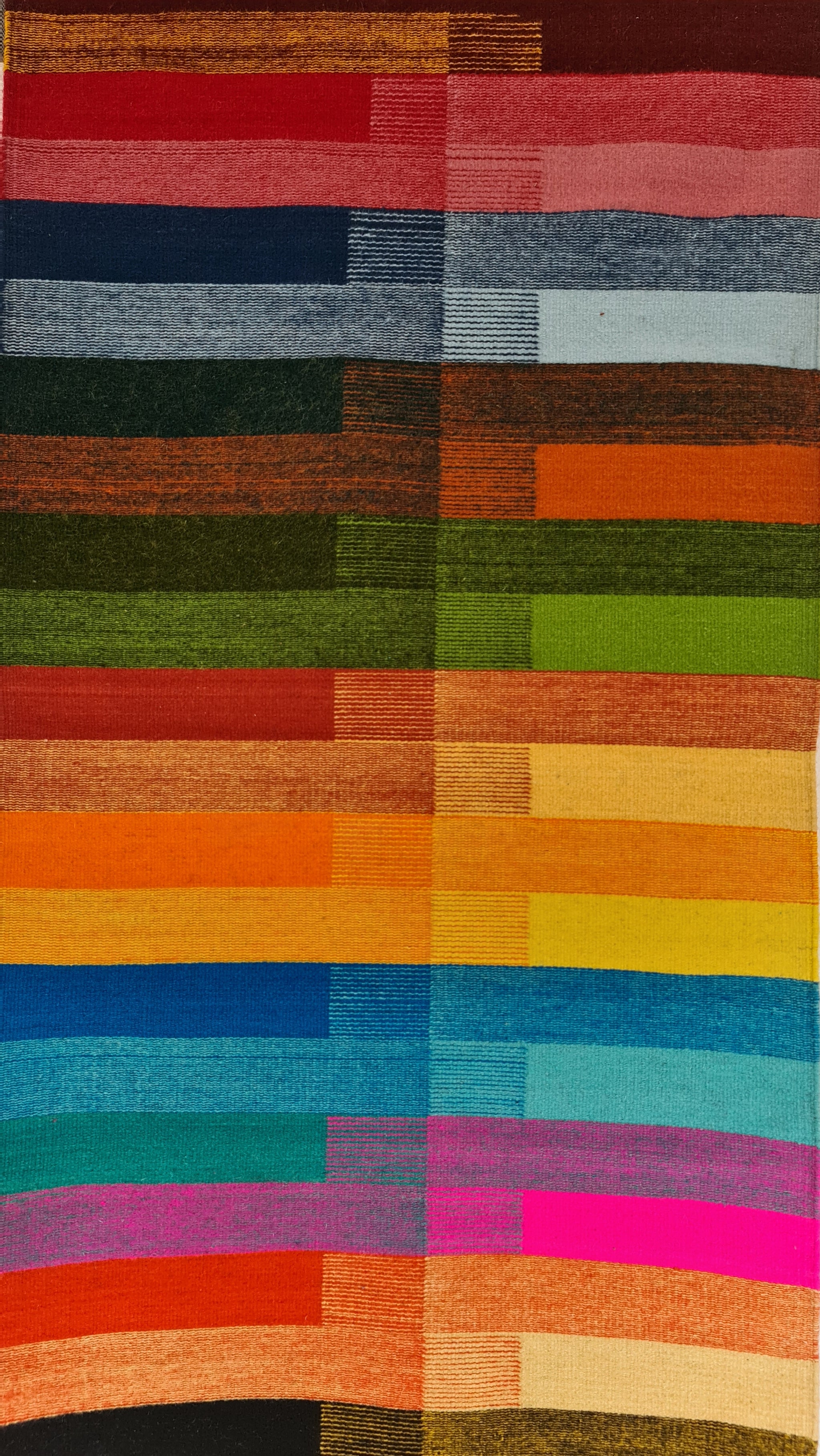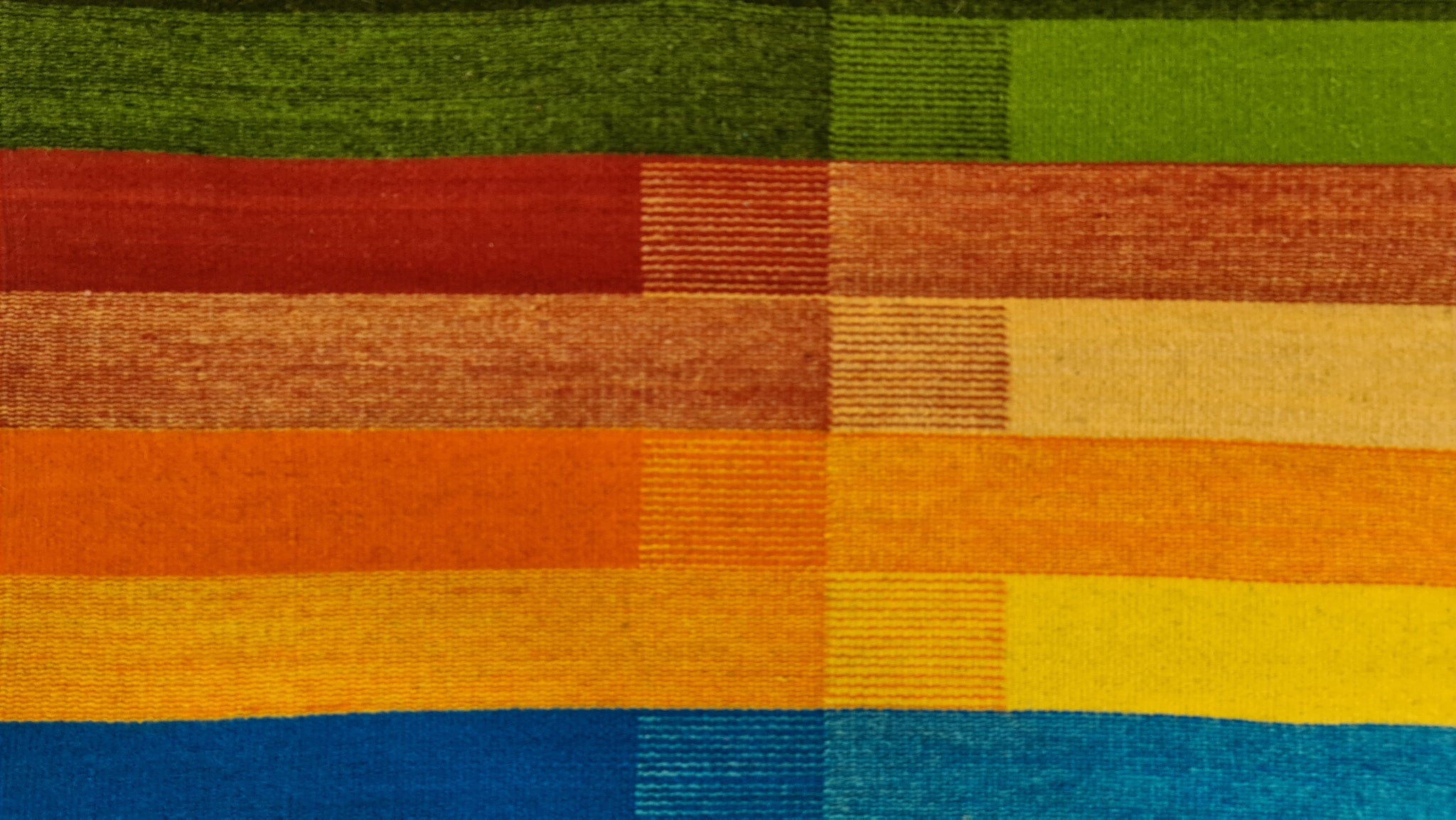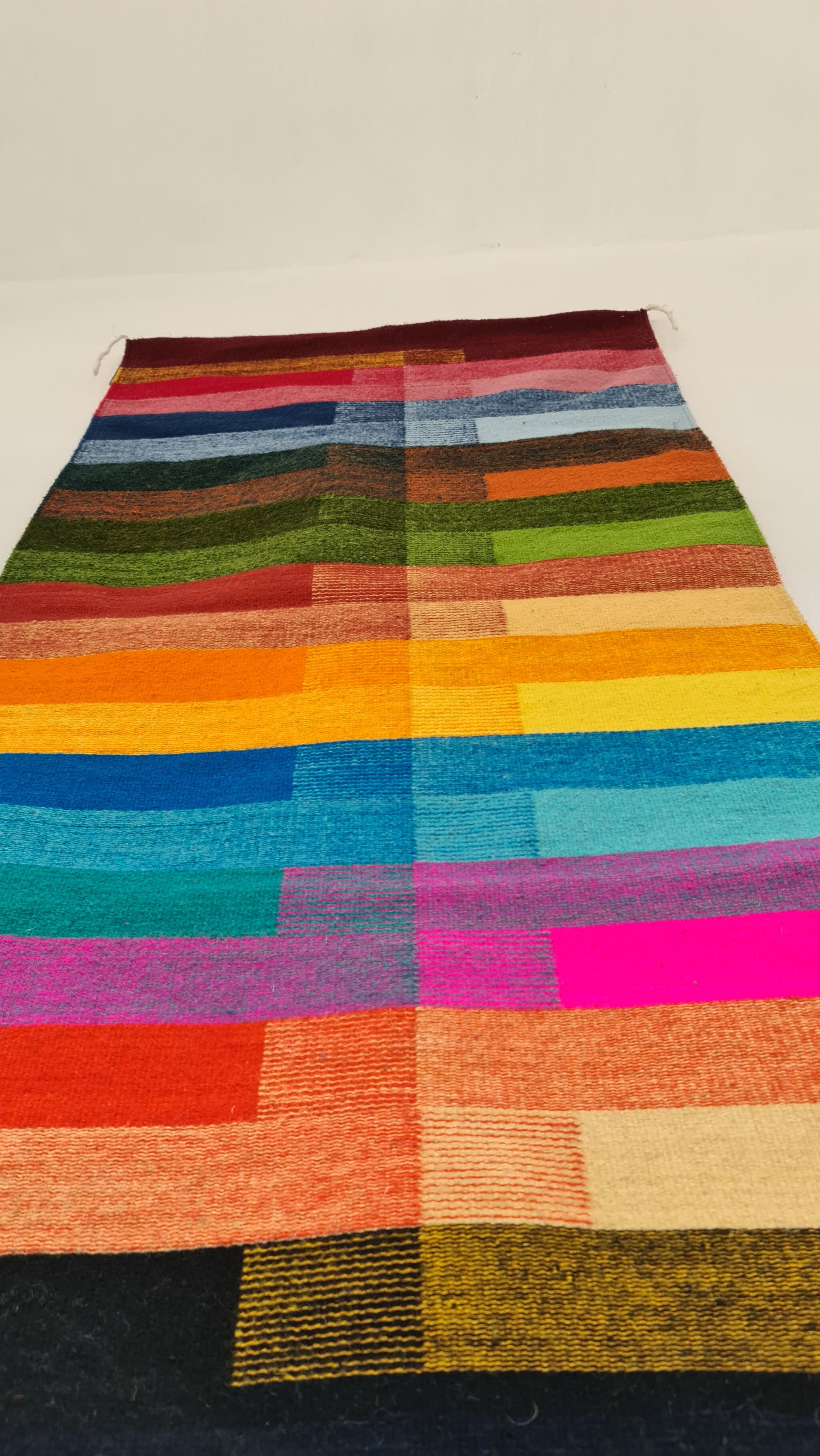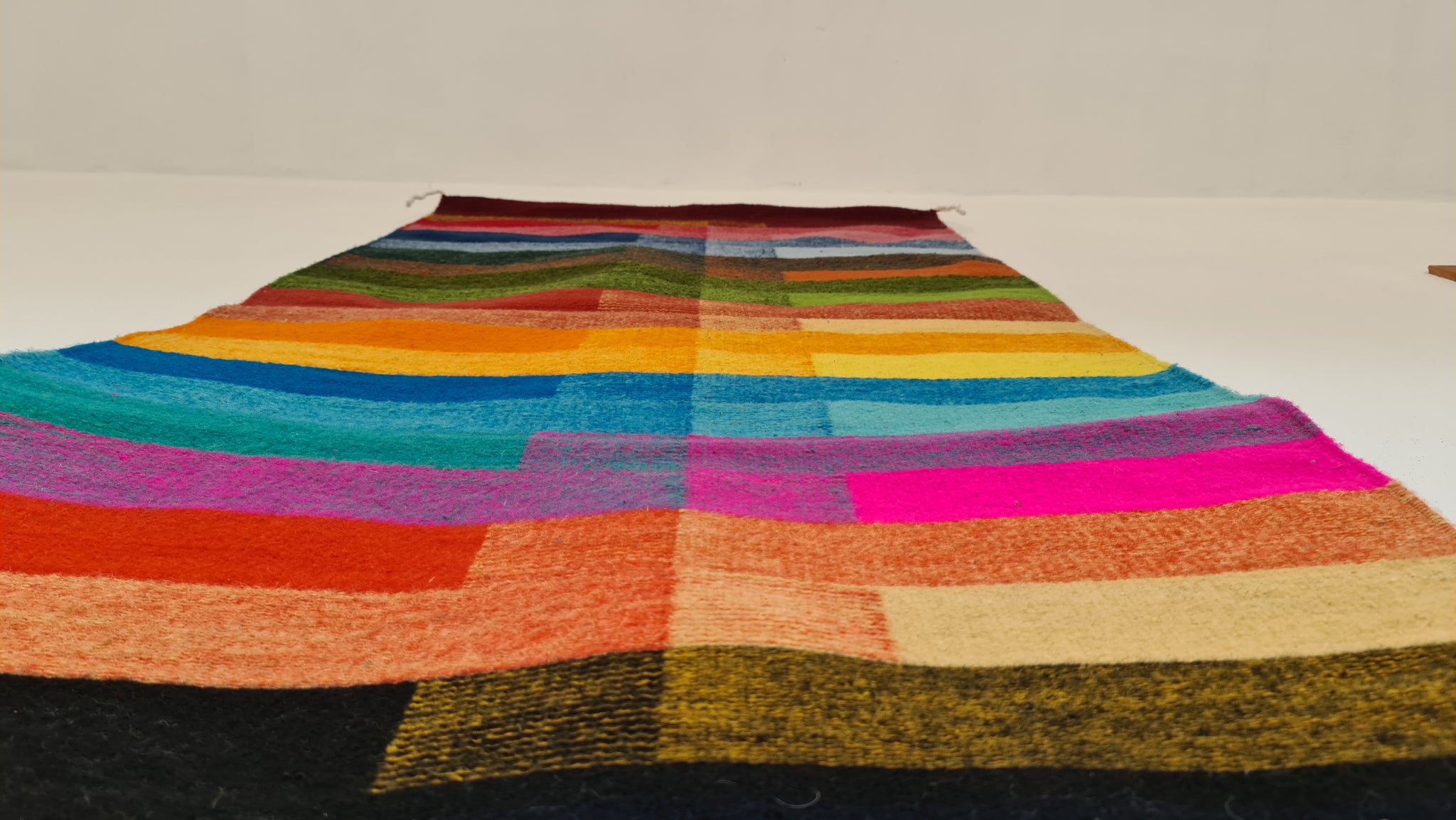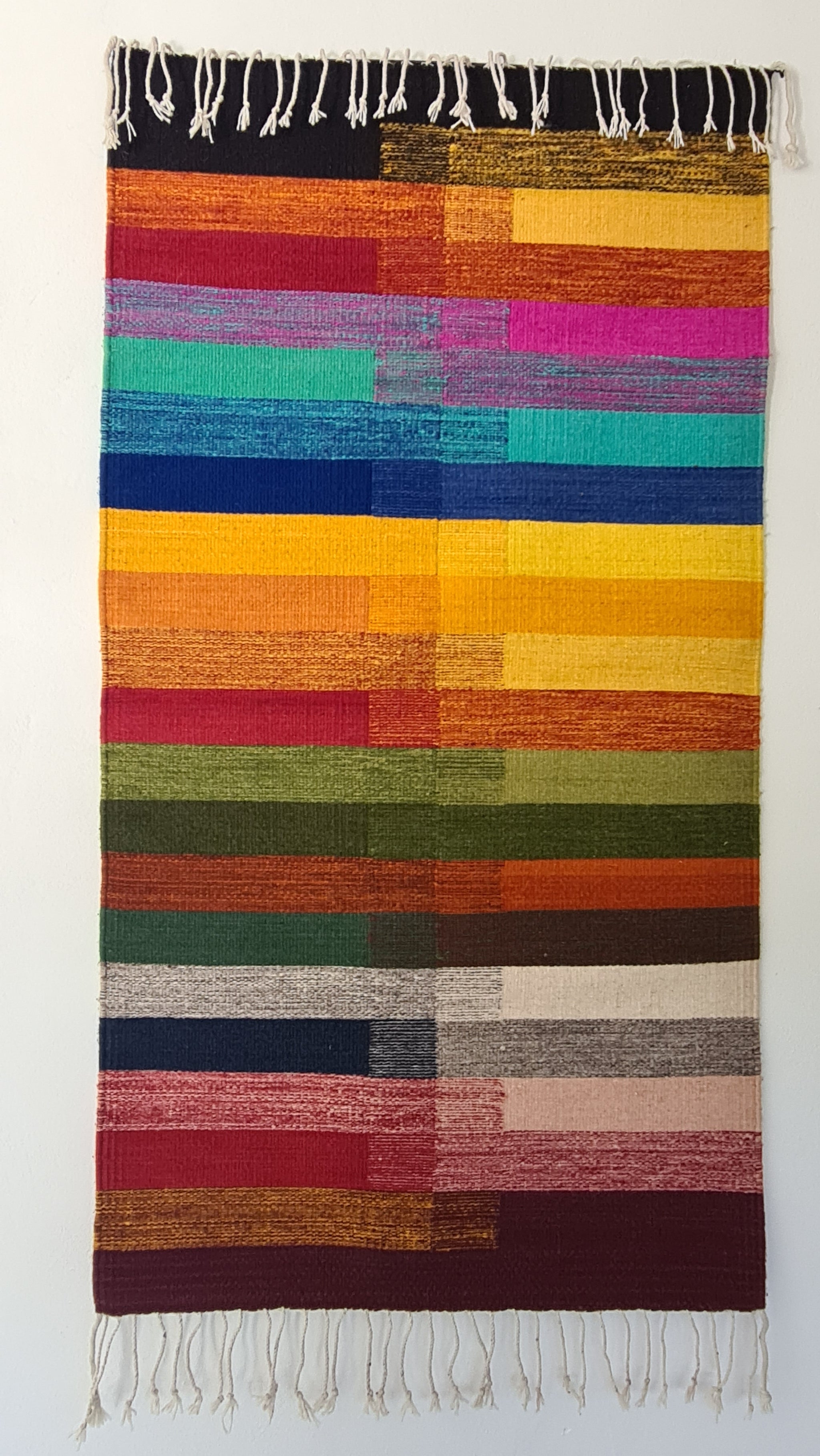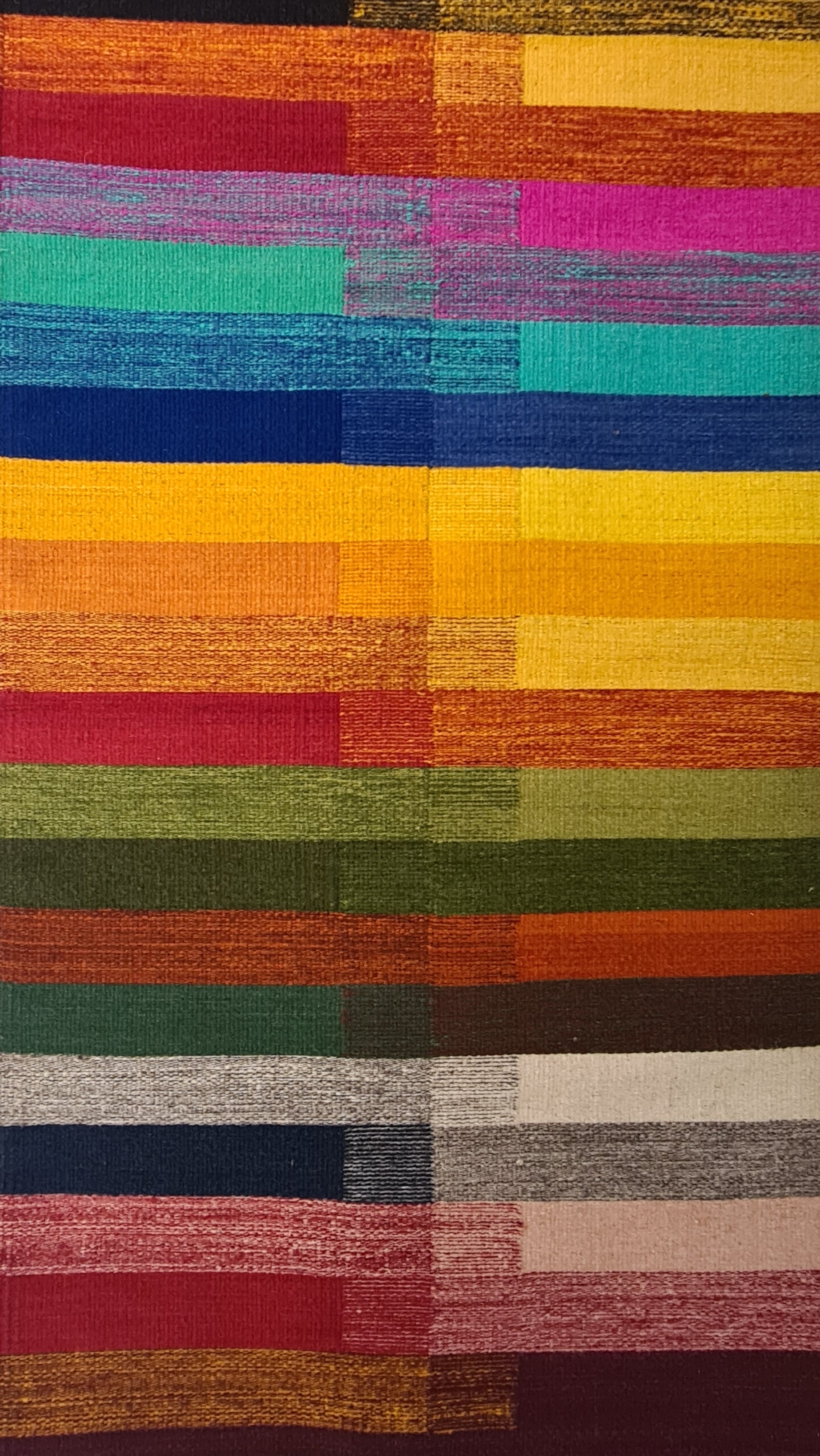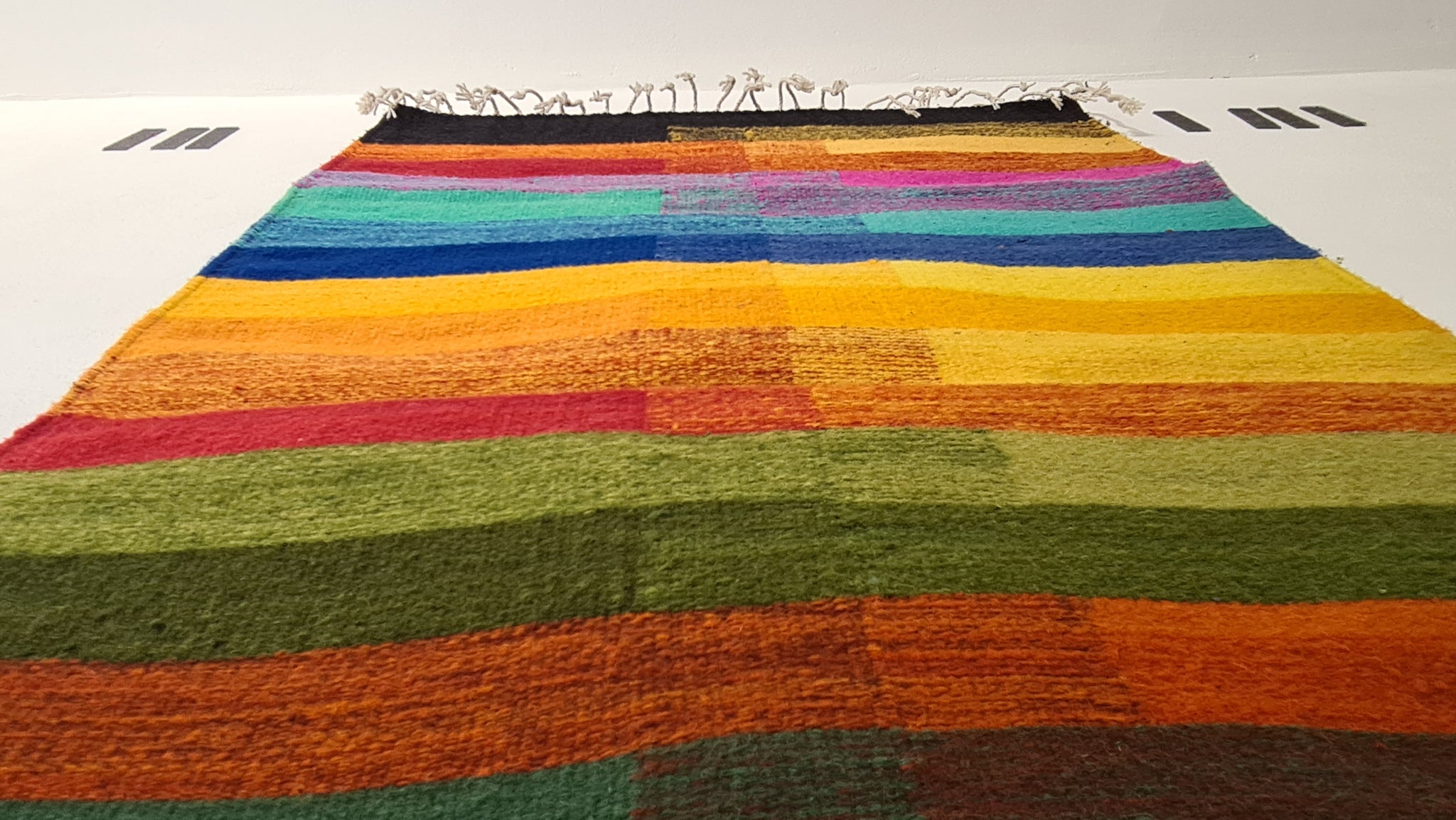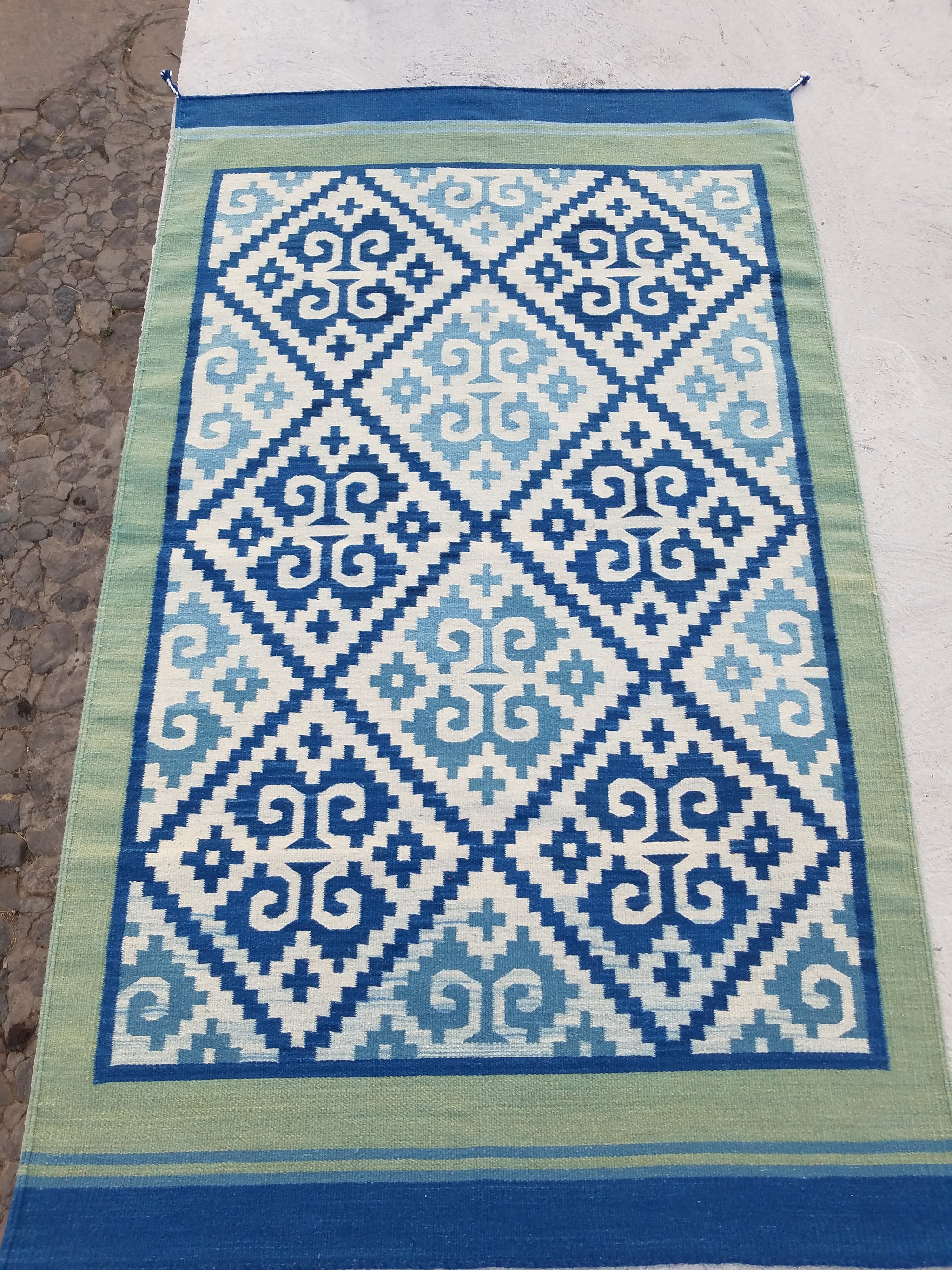Shcarlin beni Shiguie'a: Teotitlan people's spirit
Sold Out $ 50,800.00
Size: 200x300cm, 6.5x10ft
Weaver: Hilario Bautista
Price: $2,500USD
Free DHL world wide shipping.
Materials and methods: criollo sheep wool hand dyed with colorfast aniline dyes using an exhaustive method. Handwoven on a Zapotec style loom of the 16th century adapted from European styles. Woven using a 7 threads per inch reed.
Design patterns and symbols.
This pattern is a fractal symbol that teaches us about the perception state that nahuales (shamans) achieve when they unite their nahual (intuition and dreams) perception in the spirit world with the day to day perception in the tonal world of language, logic and mathematics. The nahual pattern is obtained by uniting the hands in a fist shape with the thumbs joined in the middle, just like a mudra; you can see it in the curling of the main pattern in the center of the diamond. This pattern also looks like the spiral of the Fibonacci series, the golden ratio that is found everywhere in nature, from our fists to the growth of plants and the formation of clouds and galaxies. This inner spiral represents the inner journey of self discovery that we have to embark to find our true face and true heart. We call this symbol in our language "Gareak Guiea", literally the flowered greek key symbol. Archeologist named this patterns Grecas in Spanish language because they noted the similarity with greek patterns and symbols. This naming of the pattern denotes the Eurocentric approach to the understanding of our native ancient cultures.
When I talk about the Nahual pattern I like to illustrate the pattern with the life path of Maria Sabina, a world renowned healer from Huatla de Jimenez that used the sacred mushroom to heal people in her village. It took her a life time to reach the status of a healer; when she was a young child her parents died so because she was very poor she and her sister would forage edible wild plants in the forest to feed themselves. Her life pattern lead her to walk the path of the warrior to bring the best of her spirit and flower in the world. When she was an accomplished healer she could transition easily from the Nahual perception (spirit world) to the day to day world; in the spirit world she would communicate with her patients to find out the source of their illness and then come back to the tonal world (day to day language world) to administer the healing with the precise amounts of plants and rituals needed for healing. Most ancient governors in our culture were Nahuales, healers, seers and great man and woman full if knowledge. It was during the colonial times that the word nahual got transgressed into a negative connotations describing evil people that cause damage and illness by transforming into scary animals.
Because the Nahuales use the totality of consiouness and understand life and death as one, they are often seen fighting for a bigger cause or defying the status quo even if it costs them their life; such was the case of Emiliano Zapata and María Sabina. Emiliano Zapata was a leader during the Mexican revolution that fought to protect his ancestral people's land in Anenecuilco, and soon his fight would find echo in many other villages. The whims of history and his great spirit lead Emiliano to become the general of the armed forces of southern Mexico looking to give land back to the native people and restore the balance of power between the European descendants and the campesinos and working class. In many of his letters, Zapata signs with the phrase that he would not stop fighting until the land is given back to those that work on it and he refused many big bribes and offerings from the establishment to cease his cause. Up until today, we say Zapata vive, la lucha sigue! The same happened with the death of Maria Sabina who opened the eyes of the world to the world of sacred mushroom healing, she lost her reputation among her village, but she also brought great awareness to the deforestation and logging taking place in the Mazatec region. At the end of her life she said that the sacred mushroom had lost their healing poweres because of the vanalization of their use and that she would bear the burden of all the diseases that she helped to heal.
The diamond pattern represents the medicine of the snake. Snakes are the elders of the planet and hold the ancient knowledge, medicine and power. In our language, the word for sister is Bealaā, my snake.
Share:
Related Items
Zapata vive, la lucha sigue!
$ 12,500.00
Tamaño: 70x100cm Size: 2.2x3.2 ft Tejedor / Weaver: Luis Mendoza Materiales y métodos: lana criollo de borrego teñida a mano con tintes naturales: bèè (grana cochinilla), Yauhtli (pericón) y Jiquilite (añil). Tejido...
Yeéti: rainbow
$ 7,150.00
Size: 80x150cm Weavers: Francisca Hipólito Variant 1 Belen Bautista, Variant 2 Price: $350USD Materials and methods: criollo sheep wool hand dyed with colorfast aniline dyes using an exhaustive method. Handwoven...
Yagshíi - River Nahual
$ 30,000.00
Size: 4.2 x 6.5 ft Indigo dyes on native criollo sheep wool. Weaver: Mario Bautista Martinez This pattern is a #fractal symbol that teaches us about the perception state that...




